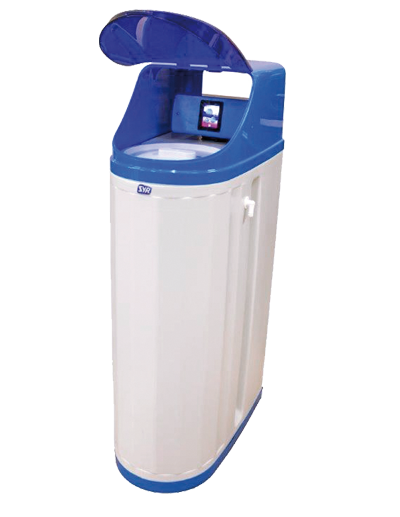Water Softener Filtration System
A water softener is a filtration system designed to remove hardness-causing calcium and magnesium minerals from water through a process called “ion exchange”.
A water softener is made up of a resin tank, a brine tank and a softener control valve. Together these work together to remove the minerals from hard water, monitor the flow of water, and periodically clean the system through a regeneration process.
Limescale is the chalky substance that forms in crusts around taps or creates a white film on your shower screen or the bottom of your kettle. Limescale is caused by water that contains a higher mineral content, when the “hard water” evaporates from the surface, it leaves behind calcium and magnesium deposits.
- Some of the visible limescale build-up include:
Kettles
Showerheads
Shower screens
Kitchen and bathroom tiles
Taps
Coffee machines
However, limescale also builds up in areas of the home that you cannot see.
- Some of the invisible places where limescale build-up can occur include:
Heating system pipes
Radiators
Water pipes
Large appliances like the washing machine and dishwasher
The element in your geyser
The problem that limescale causes
A family of four can create up to 70 kilograms of limescale each year, just by using water in the usual way that we all do. This is the weight of an average adult, so it’s easy to see how this volume of any solid substance like limescale, added to your heating system each year, could lead to problems quite quickly.
Three main problems with limescale build-up are:
Increased electrical bills – As your heating system becomes clogged with limescale, it has to work harder to heat your home up to the right temperature. It is estimated that just 1mm of limescale in your hot water system can increase your energy use by 7%.
Damage to appliances – Limescale build up can reduce the water flow within the appliances, meaning, they have to work harder to heat sufficiently. As a result, your appliance has a reduced lifespan, costing you more money in repairs and replacement.
Intensive cleaning is required as limescale build-up can be tricky to remove if it has been building up over time. You may have to spend more time, money, and effort than usual on cleaning products to remove the limescale.
The advantages of soft water include better quality of life, as it pampers your skin and making your hair feel silky soft, and you get to savour the full aroma of your tea and coffee. Your laundry and towels will be perfectly soft AND you will require less detergent as softer water enhances the cleaning agents properties.
Valves and installations will no longer be subject to limescale, and hideous lime deposits will be a thing of the past.
To choose the right size water softener, a complete water analysis of your water source, as well as the desired flow-rate per hour, is required to determine the right product for your application.

LEXsmar
LEXsmart features:
Touch-display with easy menu navigation
Compact control unit
Analysis and statistics feature
Adjustment of the regeneration intervals to consumption habits
Wi-Fi-enabled allowing for intelligent control via smartphone, tablet computer and SYR App
Technical Specifications of the LEXsmart 12 Liter:
| Operating Pressure | Minimum 2 Bar ─ Maximum 8 Bar |
| Operating Temperature | Minimum 5˚C ─ Maximum 30˚C |
| Fluid | Potable Water |
| Power Supply (Included) | 6W | 230V | 50Hz |
| Flow rate at Δp 1.0 Bar Capacity exchanger resin (in m³) |
2.1 m³/h (2,100 ℓ/h | 35 ℓ/minute) 24 x °dH |
| Short-term flow rate with which the ion exchanger can be operated. Very hard water can reduce the indicated nominal flow rate. | |
